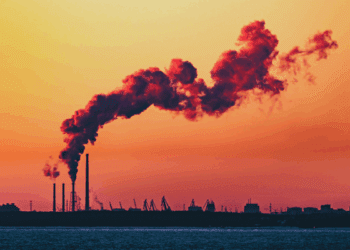January 29, 2012 – In his latest column for the Ottawa Citizen, MLI’s Brian Lee Crowley addresses why we don’t process the oilsands here at home. An excerpt below:
Forcing investments of billions of dollars in unproductive capacity and delaying oilsands development won’t improve Canada’s standard of living, but the reverse. Our current policy of expanding oilsands production while continuing to build upgrading capacity and using lowcost spare upgrading and refining capacity wherever it is available gets the best value out of the resource for Canadians.
Read the full column here:
Why we don’t just refine the bitumen in Canada
By Brian Lee Crowley, Ottawa Citizen, January 28, 2012
All across the political spectrum the cry is heard: process the oilsands here at home.
Bank executives, trade unionists, editorialists and others want us to do all the work here.
Who could be against adding value to our resources before we export them? Where it makes sense and makes the greatest contribution to Canada’s prosperity we should all be in favour. But the simple calculus of more processing equalling more jobs and prosperity in Canada is not at all obvious when you dig into it.
Canada is a tiny market with a world-scale source of petroleum in a corner of North America that is far removed from the bulk of oil product consumers and is facing critical shortages of workers. All of these factors matter in thinking about how the get the best value out of our petroleum resources.
A bit of background: we don’t get oil out of the oilsands. We extract a tarry substance called bitumen.
That bitumen has to be “upgraded” (i.e. the undesirable bits stripped out) to make “synthetic” crude. A second step (refining) is then required to transform the oil into gasoline, diesel, jet fuel and so forth.
Unlike “conventional” crude, then, refining oilsands output is an expensive two-step process.
Moreover not all refineries can handle the upgrading. Oils vary a lot in their intrinsic qualities (such as sulphur content, for example), and refineries are designed for the kind of oil they will refine.
One whose feedstock will be light sweet crude from Saudi Arabia will be quite different from one built to process tarry crudes from Venezuela or the oilsands and cannot switch from one to the other without expensive refits.
In North America as a result of things like increased fuel efficiency, alternative fuels, changing consumer behaviour, etc., the demand for fuel has actually levelled off, even as the economy has grown. As a result, North America now has excess upgrading and refining capacity, particularly on the U.S. Gulf coast, a capacity designed to process bitumen-like products from Venezuela and Mexico, from whom the U.S. is buying less and less. So the capacity to process Canada’s bitumen is already available at no new capital cost, other than the pipeline to take it there.
Now look at Alberta. Far from complacently exporting bitumen, the industry has been furiously building upgrading capacity. Its ability to produce bitumen, however, is pulling ahead of its ability to upgrade it. Alberta’s economy is already red-hot and short something like 150,000 workers today. To meet Alberta’s ambitious target of upgrading two thirds of the bitumen it produces by 2020 will require the construction of four new upgraders at $10-billion apiece and require 60,000 person years of labour. That’s in addition to the work to expand bitumen production.
To require all bitumen to be upgraded in Alberta would mean lowering Canada’s standard of living, as we ratcheted back oilsands production to match our upgrading capacity at a time when the world is hungry for our output and willing to pay well for it. And that’s just for the upgrading phase, which only gives you refinable crude.
A new refinery (as opposed to an upgrader) hasn’t been built in Canada in decades. In fact the number of refineries has been steadily declining throughout Canada and the U.S., as uncompetitive facilities get phased out. Four major North American refineries have closed in the last year. The environmental and regulatory roadblocks to building a brand new refinery on a new site are such that the industry believes no such new refining capacity will ever be built in Canada.
Existing refineries also have to compete with new refineries being built elsewhere. In Jamnagar, India, 150,000 workers are today labouring on a $6-billion refinery that will be world’s largest. They have a supply of workers and a regulatory environment we cannot duplicate. North America is the target market for 40 per cent of this refinery’s production.
Because of our higher construction and other costs, it would likely cost $7 billion to $8 billion to build a new refinery in Canada if you could get approval to do so. But why would the industry invest billions to build uncompetitive new capacity that isn’t needed and likely wouldn’t be profitable? We could upgrade and refine some of our production facilities in the east (at the Irving refinery in Saint John, for example), but they are already well supplied by world oil markets, whereas getting large quantities of Alberta crude to them would be costly for little benefit.
Forcing investments of billions of dollars in unproductive capacity and delaying oilsands development won’t improve Canada’s standard of living, but the reverse. Our current policy of expanding oilsands production while continuing to build upgrading capacity and using lowcost spare upgrading and refining capacity wherever it is available gets the best value out of the resource for Canadians.
Brian Lee Crowley is the managing director of the Macdonald-Laurier Institute, an independent non-partisan public policy think tank in Ottawa: macdonaldlaurier.ca.




